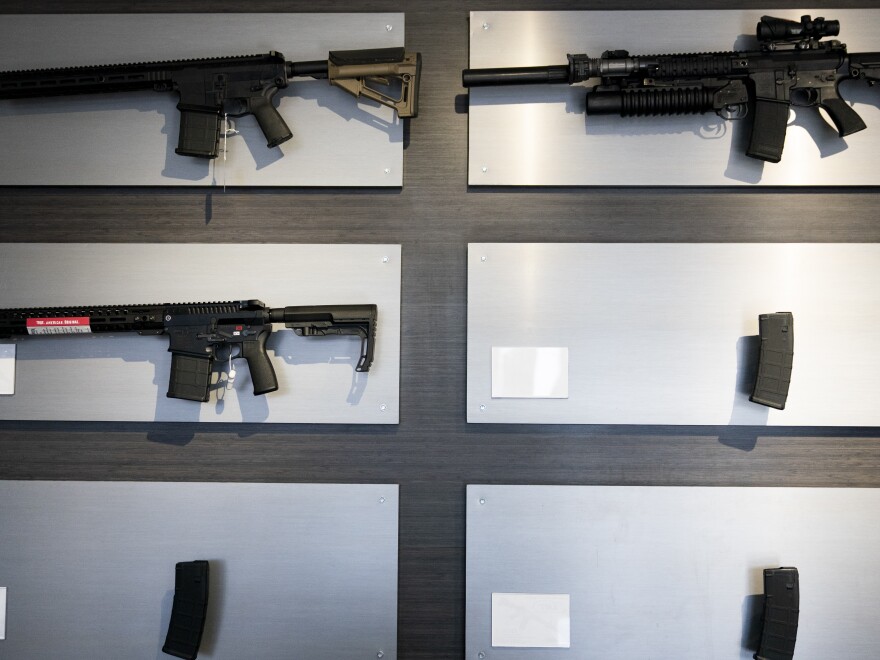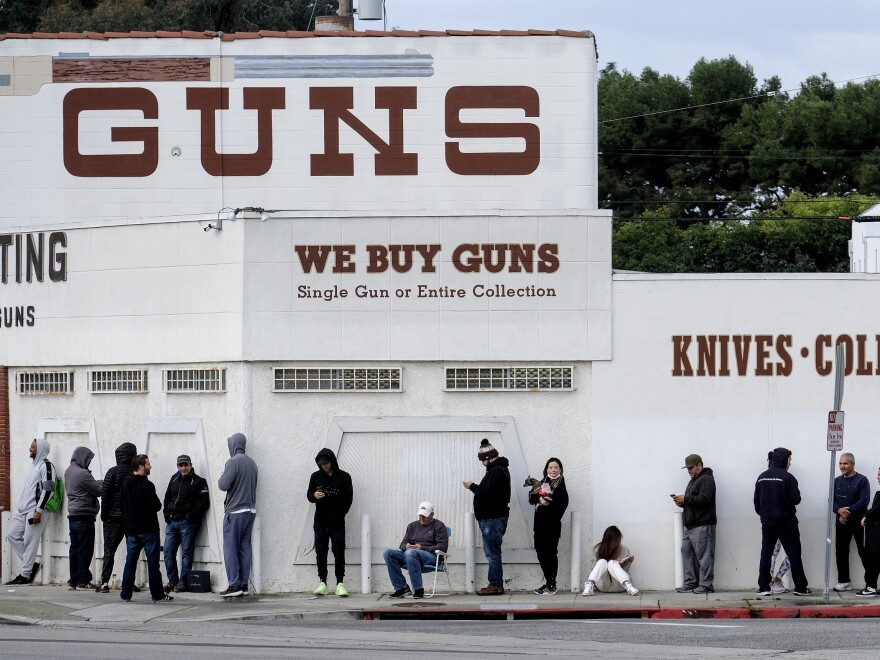The weapon used to carry out the mass shooting at an outlet shopping mall in Allen, Texas, on Saturday that left eight people dead and seven others injured is one all too familiar to Americans and lawmakers who have witnessed mass shootings occur again and again.
Mauricio Garcia, 33, was seen on dashcam video opening fire with an AR-15-style rifle.
Garcia was carrying three weapons with him and had five more in his car — all legally obtained, according to Hank Sibley, regional director with the Texas Department of Public Safety.
The AR-15 has a long history in mass shootings in the U.S.
It's often called "America's Rifle"

AR-15-style semiautomatic weapons are considered to be civilian versions of military weapons that gun control advocates say aren't very different. Its original military design dates back to the 1950s.
The AR-15, like its military version, is designed to kill people quickly and in large numbers. The National Rifle Association calls it "America's Rifle."
Critics say the weapon has no valid recreational use and civilians should not be allowed to own them.
The gun industry and gun owners say AR-15s are used for hunting, target practice and shooting competitions and should remain legal.
AR-15-style rifles are semiautomatic, which means a shooter must pull the trigger to fire each shot from a magazine that typically carries 30 rounds. A shooter with a fully automatic rifle can pull and hold the trigger and the weapon will fire until the ammunition supply is spent.
Fully automatic weapons have been heavily restricted in the U.S. since the 1934 National Firearms Act — which at the time was directed specifically against machine guns, as NPR reported in a 2018 history.
AR-15-style rifles were largely banned under the 1994 assault weapons ban

In 1994, President Bill Clinton signed an assault weapons ban, which banned the AR-15 and other similar semiautomatic rifles. The ban made it illegal to manufacture the weapon while also setting a limit on high-capacity magazines. Though as The Washington Post noted, there were plenty of loopholes.
The ban allowed weapons or magazines that were manufactured before the law went into effect in 1994 to be owned or resold.
Mass shootings across the U.S. went down in the decade that followed, in comparison to the decade before (1984-94) and the one after (2004-14), according to one researcher's analysis.
Once the assault weapons ban expired in 2004, gun manufacturers quickly began producing the guns and sales quickly rose.
The following is a partial list of when an AR-15-style weapon was used in a mass shooting:
Debates around gun control often focus on AR-15-style rifles
There have been at least 208 mass shootings in the U.S. this year, according to the Gun Violence Archive. The shooting in Allen, Texas, is the second-deadliest shooting of the year in the U.S.
After months of activism by families of victims of the Uvalde shooting, a committee of Texas state lawmakers on Monday moved forward with a gun control bill that would raise the legal age to buy an assault-style weapon to 21 years old. The bill will also prohibit firearm sales to those who are intoxicated or who have a protective order against them.
The bill heads to the Texas House Calendar Committee and then to the state's House floor for further debate before its vote. It faces long odds of becoming law.
After the shooting in Allen, President Biden again called for a ban on assault weapons and high-capacity magazines as well as other gun safety measures, such as universal background checks and ending immunity for gun manufacturers.
Greg Myre contributed reporting.
Copyright 2023 NPR. To see more, visit https://www.npr.org.






